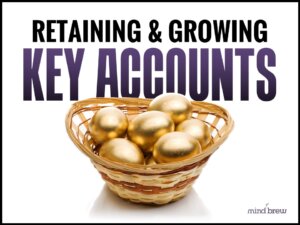Given the complexity of most sales operations, the allure of pat answers and one-size-fits-all solutions can be very hard to resist. This is especially true when seemingly universal solutions and methods are presented and endorsed by high-profile industry pundits. After all, the pundits’ recommendations, often rooted in their own unique experiences, can seem like hard-earned wisdom wrapped in very welcomed shortcut.
However, the danger lies in assuming the pundits’ context matches your own and blindly adopting recommendations that may not be at all applicable or appropriate in your specific situation.
For example, too many sales operations have fallen into the trap of measuring churn in a manner that is not the best fit for their particular business. This paints an inaccurate picture as to the health of the business and leads to poor decision-making. The root of the issue lies in the failure to recognize that churn can actually be quantified in multiple ways, each providing a different perspective on customer behavior, business health, and ongoing performance:
Customer Churn
Customer churn is the percentage of customers who cancel their subscriptions or stop purchasing your products or services within a given period of time. This is not only the most common measure of churn, it’s often presented as being “THE” measure of churn. In fact, when talking about the concept of churn, many people will actually refer to it as “customer churn.”
While customer churn might be a great metric for a company offering a single product at a single price to a homogeneous set of customers, it leaves a lot to be desired for almost every other type of company.
Where customers have very different purchasing profiles and lifetime values, a customer churn metric can hide the fact that you’re losing your most valuable customers. And in B2B markets where buyers need multiple vendors on the hook at all times and don’t defect all at once, customer churn metrics can hide the fact that you’re losing customers through attrition over time as they become cherry-pickers of only your cheapest, most commoditized offerings.
Revenue Churn
Revenue churn, on the other hand, focuses on the amount of revenue lost from existing customers within a given period of time. As such, some will refer to this measure as a “revenue attrition” metric.
A revenue churn metric is particularly relevant and useful where customer values and purchasing patterns can vary dramatically, whether or not the customer has actually defected or canceled entirely. Unlike the customer churn metric, this metric quantifies and exposes the relative top-line value of the business you’re losing, making it easier to recognize “soft defections.”
Profit Churn
Profit churn takes the concept one step further by considering not just the revenue being lost but the profitability of that revenue. As true net profitability numbers can be difficult to compile in a timely fashion, a profit churn metric is usually based on margin dollars or contribution dollars as a sufficient proxy for relative profitability.
In businesses where not every revenue dollar contributes to profit to the same degree, this metric is essential for understanding the real impact of churn on your bottom line. A profit churn metric is appropriate where profitability can vary dramatically based on the mix of products or services being purchased, the cost-to-serve and acquisition costs associated with various customers or segments, etc.
The point is that you shouldn’t just default to whatever metric or method some big-name pundit says works best for them or their portfolio of companies. To measure churn most effectively in your unique situation, you have to understand the strengths and limitations of each metric and method, and choose the one(s) that best align with your particular business model, target markets, buyer behaviors, product and service offerings, cost structures, and so on.
Also, keep in mind that there’s no rule against measuring, reporting, and analyzing all three of these churn metrics at the same time. In fact, using multiple measures can provide the most comprehensive view of how churn is occurring in your business and how it actually affects the different aspects of your overall performance. And with this more holistic perspective on the issue, you can’t help but make better decisions about corrective actions.













